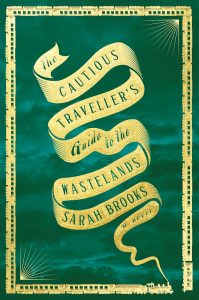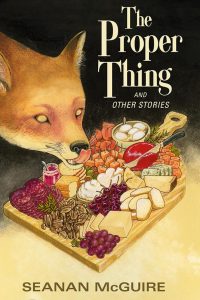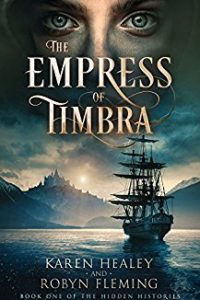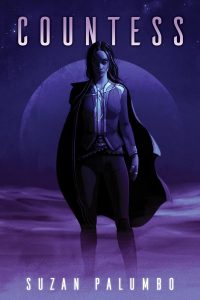Gary K. Wolfe Reviews The Cautious Traveller’s Guide to the Wastelands by Sarah Brooks
 The Cautious Traveller’s Guide to the Wastelands, Sarah Brooks (Flatiron 978-1-25087-861-8, $28.99, 336pp, hc) June 2024.
The Cautious Traveller’s Guide to the Wastelands, Sarah Brooks (Flatiron 978-1-25087-861-8, $28.99, 336pp, hc) June 2024.
Fantastical train journeys are pretty much a subgenre unto themselves, and no wonder. There’s a huge amount of imaginative space between, say, Snowpiercer and The Polar Express, or between Miéville’s Railsea and anything else at all – though Sarah Brooks’s debut novel, The Cautious Traveller’s Guide to the Wastelands, carries a few echoes of Miéville, as well as of Jeff Vandermeer’s Southern Reach novels. That’s because it’s also part of another subgenre – the Zone novel, in which characters encounter a transformed region that challenges their very notions of reality, while at the same time giving authors license to unleash their Inner Surrealists. Such zones have been useful to generations of SF, fantasy, and horror writers – M. John Harrison, Delany, the Strugatskys, Lovecraft, King, Ian McDonald, Karin Tidbeck, J.G. Ballard, and on and on. Brooks adds yet a third, historical element to the mix by setting her novel at the end of the 19th century, aboard an elite trans-Siberian train from Beijing to Moscow, which affords her the opportunity to introduce a classic cross-section of travelers, as well as to offer some sly commentary on class, religion, nationalism, and even corporate greed.
The Wasteland of the title is a broad section of Siberia through which the train must pass, but which began to change in strange and unpredictable ways nearly a century earlier. The cast could almost be drawn from Agatha Christie (yet another genre?) – a haughty countess and her maid, a French aristocrat and his wife, an oddball scientist hoping to redeem his reputation from an earlier fiasco, a cartographer determined to chart at least parts of the Wasteland, a grief-stricken woman hoping to clear her father’s name after an incident during an earlier crossing, and, most importantly, a 16-year-old orphan girl named Weiwei, who has lived her entire life on the train and knows its secrets better than the captain – or than the two rather ominous figures called the Crows, whose job is to represent the corporation that owns the train and to protect its interests. Unknown to anyone else, Weiwei is hiding a mysterious stowaway named Elena, whose true identity eventually makes her the single most pivotal figure in the novel.
As is almost inevitable with group-travel tales, the opening chapters involve settling in and meeting these characters, whom Brooks sketches deftly, mostly but not always avoiding obvious stereotypes. Her real strength, however, lies in the carefully paced sense of mounting dread and strangeness, almost as in a good haunted-house novel – at first fairly modest oddities like a murmuration of birds or a sudden movement that feels as though something is trying to push the train off the tracks, followed by visions of a ruined ghost-train and increasingly bizarre creatures sighted through the windows, eventually with weird patterns appearing on the windows themselves. When a water leak requires the train to stop briefly in the Wasteland – and a few figures even exit the train in violation of all protocol – the most serious danger turns out to be the possibility that the inside of the train has been contaminated, an eventuality for which the corporation’s draconian solution would be to simply seal the entire train, with everyone trapped inside forever. And as the stakes grow more apocalyptic for those on board, the supernatural fireworks grow more spectacular as well, and Brooks’s themes of evolutionary change, corporate brutality, and personal discovery grow more complex. What seemed to begin as a spooky tale of an uncanny voyage morphs into a truly inventive and haunting fantasy of chaos vs. order – or more precisely, chaos vs. authority – which in the end is far more inventive and visceral than the sum of its more familiar parts.
Gary K. Wolfe is Emeritus Professor of Humanities at Roosevelt University and a reviewer for Locus magazine since 1991. His reviews have been collected in Soundings (BSFA Award 2006; Hugo nominee), Bearings (Hugo nominee 2011), and Sightings (2011), and his Evaporating Genres: Essays on Fantastic Literature (Wesleyan) received the Locus Award in 2012. Earlier books include The Known and the Unknown: The Iconography of Science Fiction (Eaton Award, 1981), Harlan Ellison: The Edge of Forever (with Ellen Weil, 2002), and David Lindsay (1982). For the Library of America, he edited American Science Fiction: Nine Classic Novels of the 1950s in 2012, and a similar set for the 1960s. He has received the Pilgrim Award from the Science Fiction Research Association, the Distinguished Scholarship Award from the International Association for the Fantastic in the Arts, and a Special World Fantasy Award for criticism. His 24-lecture series How Great Science Fiction Works appeared from The Great Courses in 2016. He has received six Hugo nominations, two for his reviews collections and four for The Coode Street Podcast, which he has co-hosted with Jonathan Strahan for more than 300 episodes. He lives in Chicago.
This review and more like it in the June 2024 issue of Locus.
 While you are here, please take a moment to support Locus with a one-time or recurring donation. We rely on reader donations to keep the magazine and site going, and would like to keep the site paywall free, but WE NEED YOUR FINANCIAL SUPPORT to continue quality coverage of the science fiction and fantasy field.
While you are here, please take a moment to support Locus with a one-time or recurring donation. We rely on reader donations to keep the magazine and site going, and would like to keep the site paywall free, but WE NEED YOUR FINANCIAL SUPPORT to continue quality coverage of the science fiction and fantasy field.
©Locus Magazine. Copyrighted material may not be republished without permission of LSFF.







